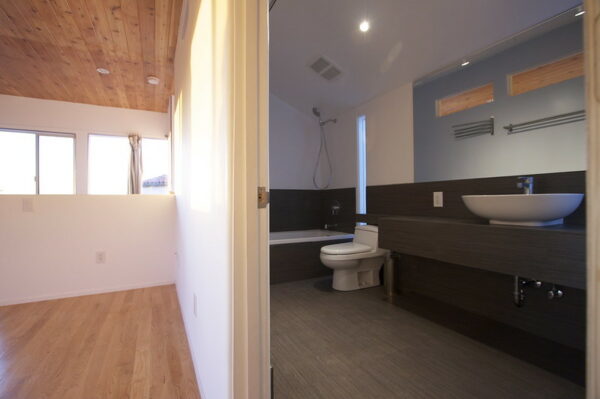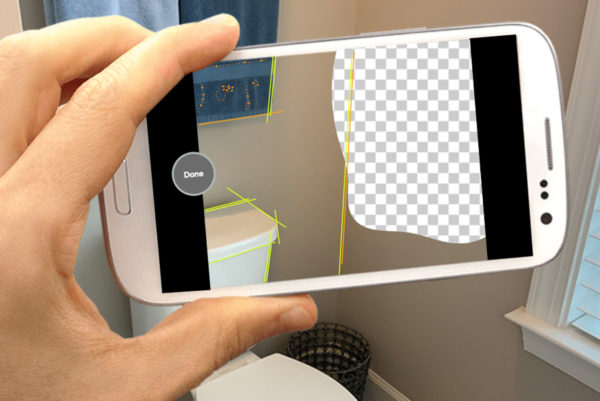Homeowners seeking to rent out their basements or other parts of their residence as well as renters and neighborhoods concerned about parking will soon have new rules aimed at helping them.
A revised zoning code for Fairfax County, the first overhaul in around 40 years, becomes effective Thursday (July 1).
In addition to updating the county’s regulated uses with new options like live-work developments and solar farms, the new ordinance loosens some restrictions around accessory dwelling units — independent residential units that share a property with a main dwelling. But zoning officials say they expect a modest increase in homeowners converting parts of their property for other people.
Adopted in March, the new rules replace existing standards for ADUs — now dubbed accessory living units or ALUs — from 1978 and 1983, drop requirements that the occupant of the revamped space have a disability or be 55 years or older, and add parking requirements.
While the changes inspired some strong opinions from community groups, their impact is expected to be relatively small: Fairfax County approved 12 accessory unit applications in 2019, seven in 2020, and two so far this year as of Friday.
County staff previously noted there have been community concerns over whether the code is being enforced. A burdensome special permit approval process also may have been creating problems, the county said.
“Others may be installing ALUs anyway, but then perhaps they’re more likely to be unpermitted construction without the benefit of the permits and inspections,” Carmen Bishop, assistant zoning administrator, said in January before the Fairfax County Planning Commission. “So a less burdensome process may result in better compliance.”
People who have wanted such changes have had to go through a hearing, a process where neighbors could weigh in. Under the new rules, a property owner can add an interior ALU with just an administrative permit instead if they meet certain requirements.
That includes a new measure that adds an extra parking spot in off-street parking. Whether or not there’s an accessory living unit, a detached single-family house on a public street must have two off-street parking spaces or — if it’s on a private street — three off-street spots, according to the county.
“When a house has an ALU, one additional parking space will be required, which means, homes on public streets will need three off-street spaces and homes on private streets will need four off-street spaces to meet the zoning ordinance standard,” Leslie Johnson, the zoning administrator for the county’s Department of Planning and Development, said in an email Friday.
The new standards come as the county’s population exceeds 1.1 million people after rising by over 100,000 people every decade from 1980 to 2010, according to census data.
With housing prices expected to continue rising, proponents of the ALU rule changes argue that they will provide more flexibility for residents who want to stay in the county but can’t afford to live on their own.
Earlier in June, the Fairfax County Redevelopment and Housing Authority approved a change that made it easier for certain people in a first-time homebuyers program to rent a portion of their owner-occupied homes after a resident made a request.
The switch applies to 38 units and makes the authority’s policy consistent with all other units in county homebuyer programs, county spokesman Benjamin Boxer said in an email.
“Those owners may rent a portion of their home as long as they continue to occupy the property as their primary residence,” Boxer said in an email. “It is worth noting that, historically, we have rarely received any requests from our participating homeowners to rent portions of their homes.”
Courtesy Jeremy Levine/Flickr
Type “Why are bathroom renovations” into Google and the first result suggested is “…so expensive.” After saving for a new home, home improvement projects are the most common reason Americans save money.
Most people believe having a bathroom that makes them happy is a worthwhile investment, yet are surprised by how much it costs.
Why is renovating a 40-square-foot space so costly? Pricey fixtures and the specialized skills required are partly to blame. However, some costs are embedded within the industry:
- “Free” quotes are expensive: On average, contractors spend 25 percent of their time building quotes for jobs they will not win. Those costs need to be recouped.
- Expense overestimation: Whether purposeful, unintentional or a little bit of both, contractors often significantly overestimate the cost of materials and effort on a project.
- Professional design: Having a professional design your bathroom is considered a luxury service and carries a luxury price tag.
- Limited visualization opportunity: Consumer Reports identifies a primary cause of price overruns as homeowners who change their mind regarding finishes or colors after they’ve been applied.
In 2016, remodeling industry veteran Chad Hall believed these inefficiencies could be eliminated by taking advantage of emerging technologies — so he founded remodelmate.
Eliminating the time-consuming process of in-home quotes, remodelmate gives homeowners free access to an app that uses advanced smartphone camera technology to generate a near-perfect 3D model of their existing bathroom. The scan is then applied to a quote-building system, generating a final labor price for the customer as well as a precise materials list for the contractor, eliminating overestimation.
To address the professional design and visualization issues, remodelmate employs CGI (computer-generated imagery) to apply homeowner color and finish selections to a model of their new bathroom. The results are photo-quality images showing the customer exactly what their new bathroom will look like before construction begins.
For more information, visit the all-new remodelmate website.



